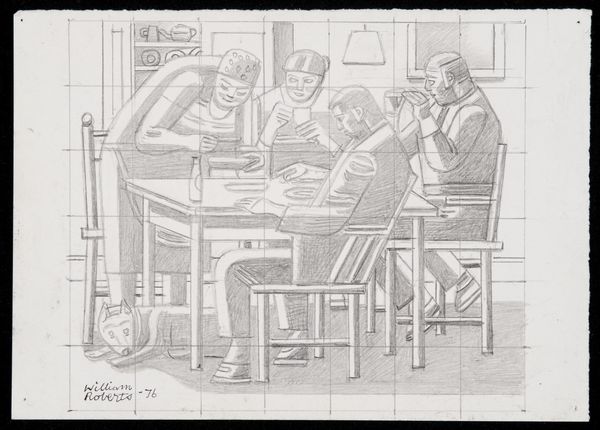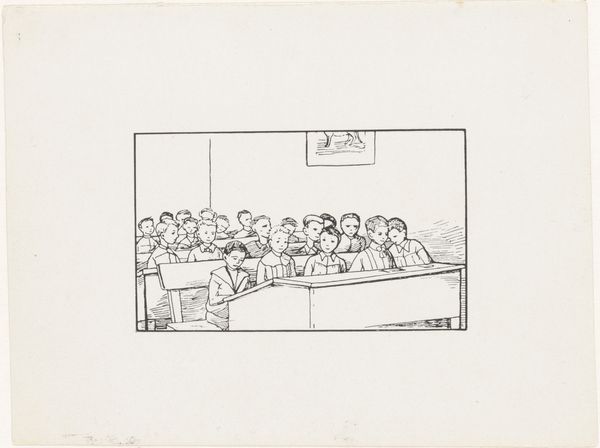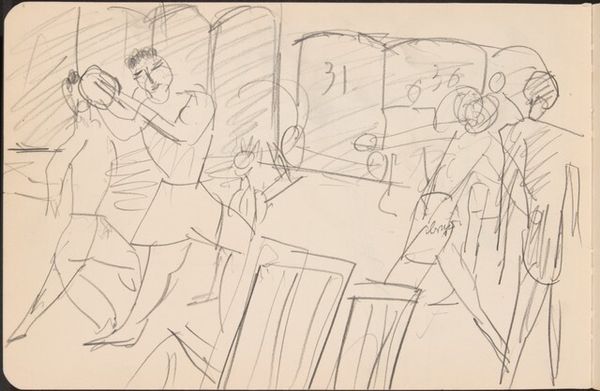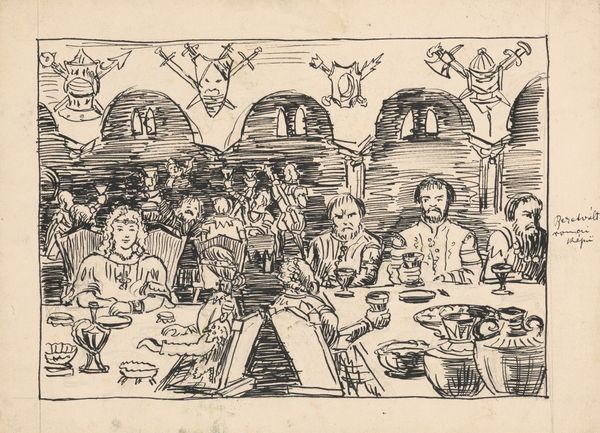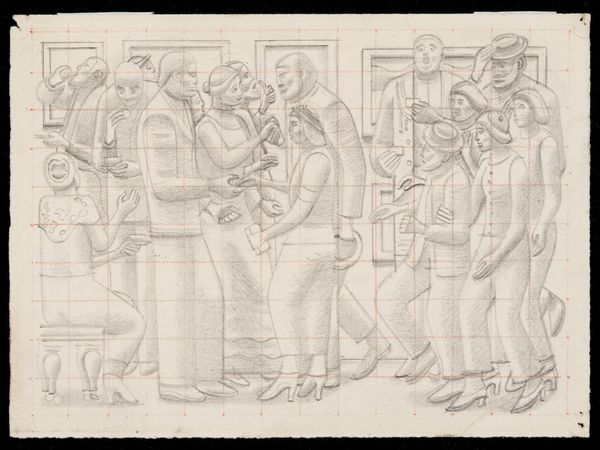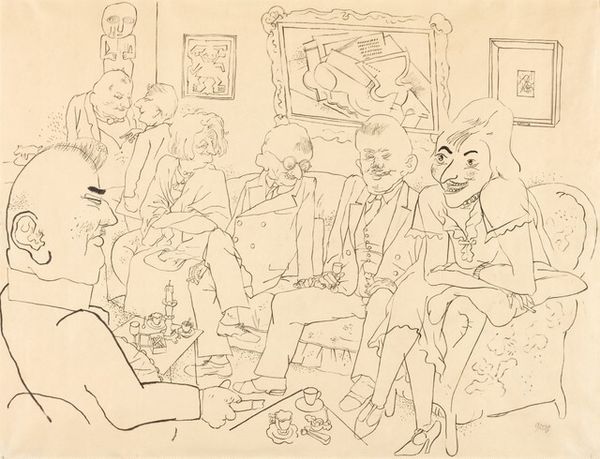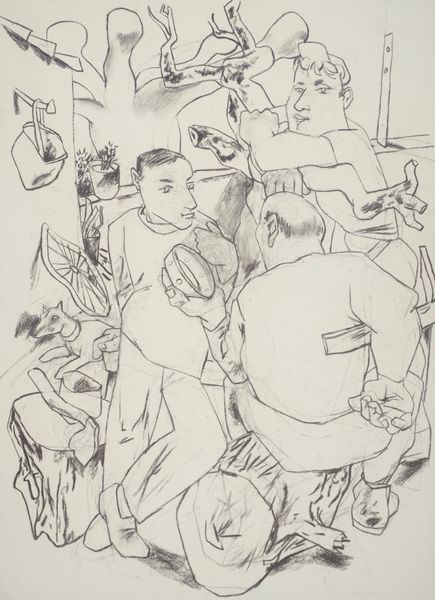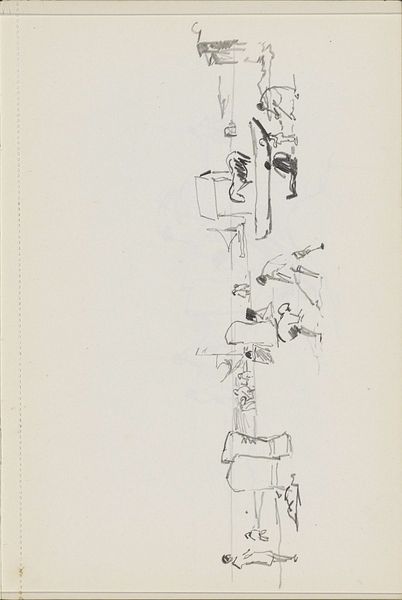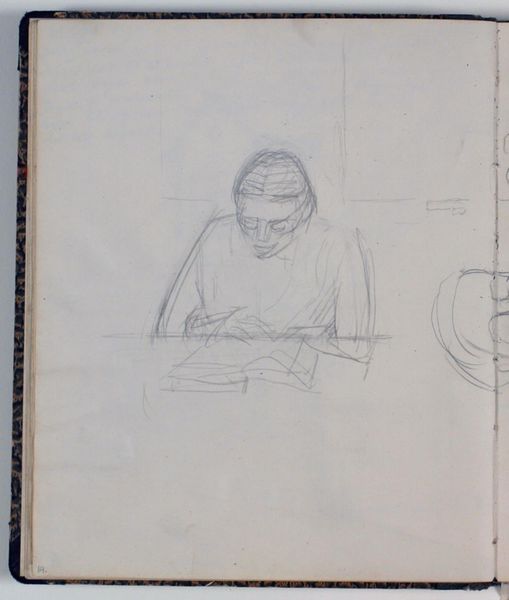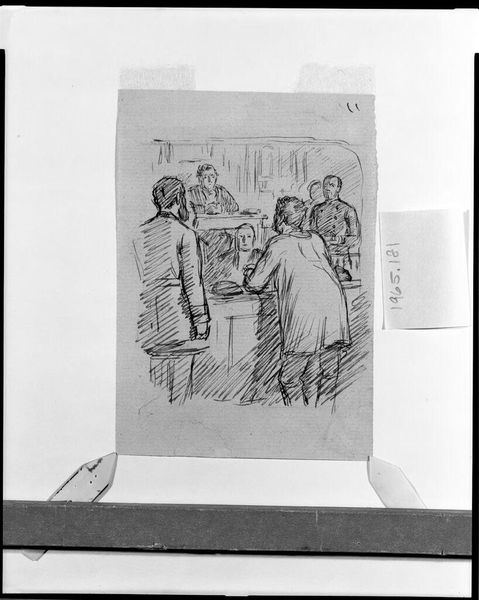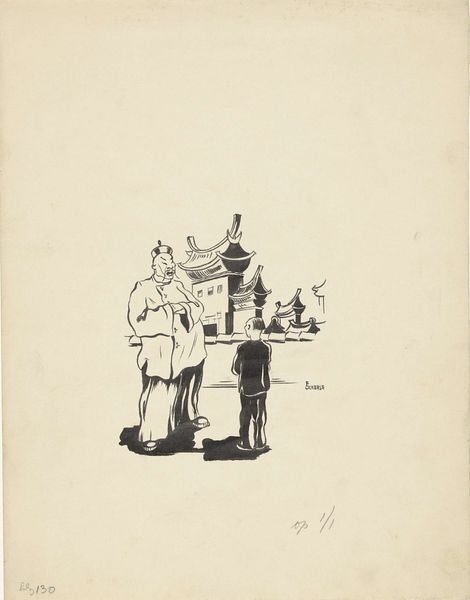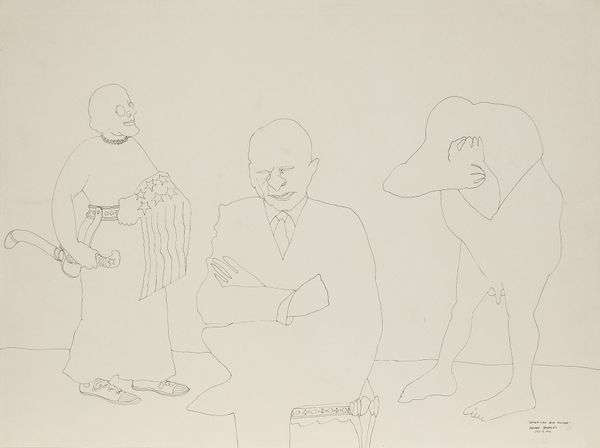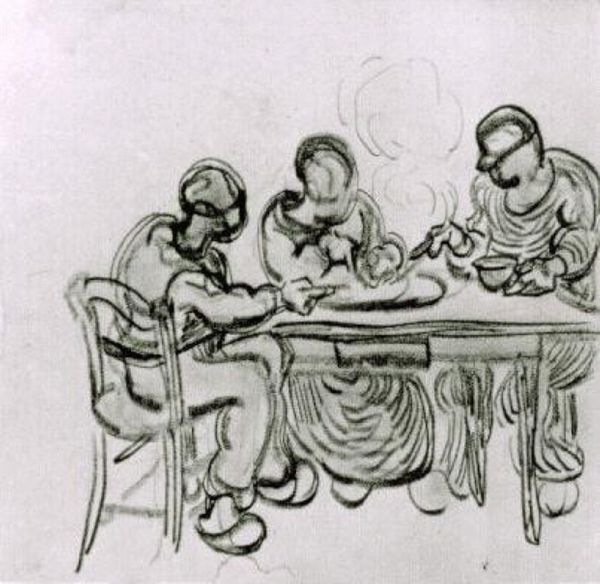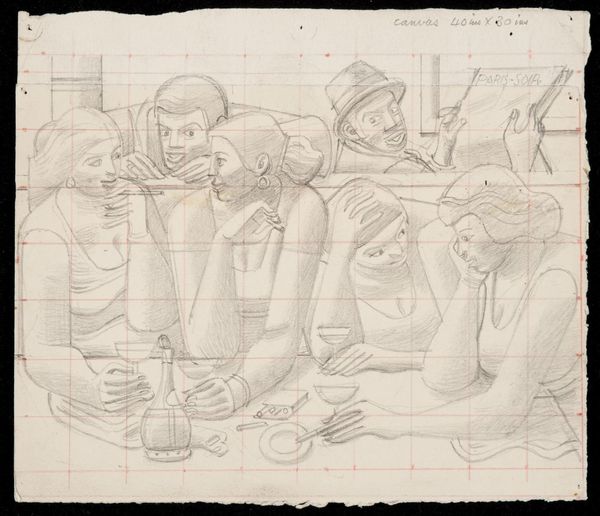
drawing, paper, ink, pen
#
portrait
#
drawing
#
table
#
pen illustration
#
figuration
#
paper
#
ink
#
line
#
pen
#
genre-painting
Dimensions: height 80 mm, width 115 mm
Copyright: Rijks Museum: Open Domain
Curator: This pen and ink drawing on paper, currently residing here at the Rijksmuseum, is titled "Twee mannen en een vrouw aan een tafel," or "Two Men and a Woman at a Table." Its creation is estimated sometime between 1878 and 1924, attributed to Julie de Graag. The work strikes me with its deliberate, linear style. What are your first impressions? Editor: Melancholy. There’s an undeniable sadness clinging to this scene. The somber faces and minimal detail evoke a sense of isolation. It feels more like a stage setting than a genuine gathering, especially as the people don't interact visually. Curator: Indeed. The table setting, with the lamp and teacups, carries significant symbolism. Notice how the lamp is centered, an almost iconic representation of enlightenment perhaps overshadowed by the evident sorrow in the male figures. Do you agree with this interpretation of light as a motif? Editor: The lamp certainly draws the eye, yet I see it more as a marker of social convention, a domestic ideal rather than any deep illumination. Given the rigid class structures of that time, and considering that tea gatherings were heavily ritualized, what kind of politics were performed at this particular table? Curator: A sharp point. Consider the woman with what seems to be needlework in her hands; domesticity prescribed and confined. But does she challenge the conventional view of submission? Editor: Maybe. Her focus is elsewhere, on her work, which speaks to a potential strength and agency not immediately apparent. The way she seems disengaged almost subverts expectations, offering a critique rather than a confirmation. Curator: And the line work, it's very spare, with economical strokes conveying volumes of untold narratives. Every line tells a part of their personal story while inviting the viewers to construct their own. It is a stark, simple method, yet very telling in so many ways. Editor: Absolutely. This sparse illustration becomes a powerful stage for us to reflect on historical notions of gender roles and domestic rituals. What does this imagery continue to say to the modern audience, and how do we unpack it? Curator: Exactly, and for me it prompts reflections on cultural memory as encapsulated within simple drawings, that serve as timeless mirrors to societal complexities, while leaving spaces for varied interpretations. Editor: Yes, leaving us to continuously explore, question, and hopefully, understand ourselves a bit better in the process, one carefully placed line at a time.
Comments
No comments
Be the first to comment and join the conversation on the ultimate creative platform.
